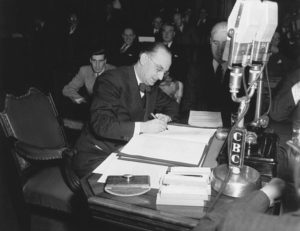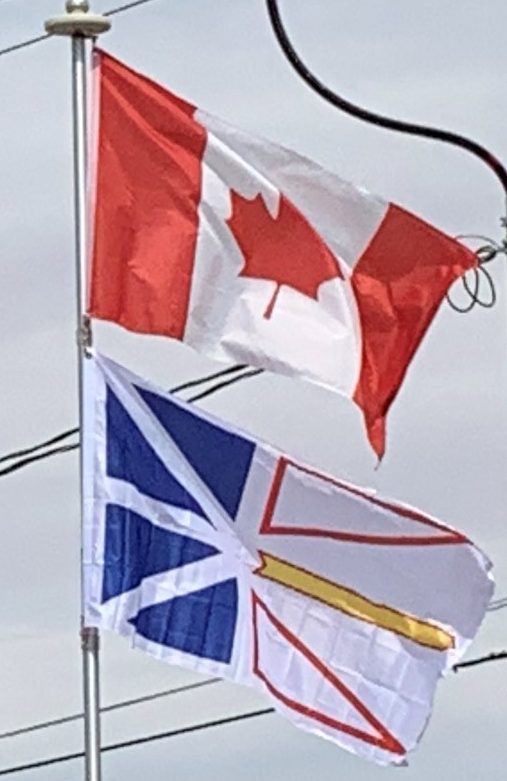When prosperity returned with World War II, agitation began to end the Commission and reinstate responsible government. Instead, the British government created the National Convention in 1946, reflecting the efforts toward self-determination that arose in Europe following the war. The Convention, chaired by Judge Cyril J. Fox, consisted of 45 elected members from across the dominion and was formally tasked with advising on the future of Newfoundland.
Several motions were made by Joey Smallwood (a convention member who later served as the first provincial premier of Newfoundland) to examine joining Canada by sending a delegation to Ottawa. The first motion was defeated, although the Convention later decided to send delegations to both London and Ottawa to explore alternatives. In January 1948, the National Convention voted against putting Confederation onto the referendum 29 to 16, but the British, which controlled the National Convention and the subsequent referendum, overruled this vote. Those who supported Confederation were extremely disappointed with the recommendations of the National Convention and organized a petition, signed by more than 50,000 Newfoundlanders, demanding confederation with Canada be placed before the people in the upcoming referendum. As most historians agree, the British government keenly wanted Confederation on the ballot and ensured it would be.

Three main factions actively campaigned during the lead-up to the referenda. Smallwood led the Confederate Association (CA), advocating entry into the Canadian Confederation. They campaigned through a newspaper known as The Confederate. The Responsible Government League (RGL), led by Peter Cashin, advocated an independent Newfoundland with a return to responsible government. Their newspaper was The Independent. A third, the smaller Economic Union Party (EUP), led by Chesley Crosbie, advocated closer economic ties with the United States. Though a 1947 poll found 80% of Newfoundland residents wanting to become Americans, the EUP failed to gain much attention and merged with the RGL after the first referendum.
The first referendum took place on June 3, 1948; 44.6% of people voted for responsible government, 41.1% voted for confederation with Canada, while 14.3% voted for the Commission of Government. Since none of the choices had gained over 50%, a second referendum with only the two more popular choices was held on July 22, 1948. The official outcome of that referendum was 52.3% for confederation with Canada and 47.7% for responsible (independent) government. After the referendum, the British governor named a seven-man delegation to negotiate Canada’s offer on behalf of Newfoundland. After six of the delegation signed, the British government passed the British North America Act, 1949 through Parliament. Newfoundland officially joined Canada at midnight on March 31, 1949.
As documents in British and Canadian archives became available in the 1980s, it became clear Canada and the United Kingdom wanted Newfoundland to join Canada. Some have charged it was a conspiracy to manoeuvre Newfoundland into Confederation in exchange for forgiveness of Britain’s war debt and for other considerations. Yet, most historians who have examined the government documents have concluded that, while Britain engineered the inclusion of a Confederation option in the referendum, Newfoundlanders made the final decision themselves, if by a narrow margin.
